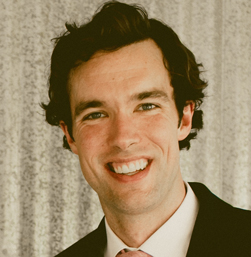At the core of our statewide education agenda released earlier this year is the idea that we need to ![]() shift to an education system in which the 6 Cs – collaboration, communication, content, critical thinking, creative innovation, and confidence – become the foundation skills that we build in every student, rather than narrowly defined math and reading skills.
shift to an education system in which the 6 Cs – collaboration, communication, content, critical thinking, creative innovation, and confidence – become the foundation skills that we build in every student, rather than narrowly defined math and reading skills.
Stating that, however, is the easy part. What is less clear is what a 6 Cs education actually looks like, and how it’s different from how we usually think about education.
One of the best people in the country at articulating these differences is Harvard education professor Jal Mehta, who uses the label “deeper learning” to describe the type of education we’re talking about. While a traditional school will feature teacher-led instruction, worksheets, and a march through a set of decontextualized skills, Mehta says that schools that focus on deeper learning allow students to “play the whole game at the junior level.”
Mehta stole this phrase from his Harvard colleague David Perkins, and it provides a nice shorthand for thinking about 6 Cs education. What it means to play the whole game at the junior level is that one’s education in a particular discipline closely resembles authentic work done by professionals, just modified for age and ability. This means that in science class students get the opportunity to see how new scientific knowledge is produced, through experiments or original research; in history, students interact with primary documents and make original arguments about how historical events relate to the issues of the day; in math, students are constructing mathematical knowledge, just as professional mathematicians do; and English classes require the type of literary analysis done by professional writers.
This is a lot different from what traditionally happens in schools in general, and non-affluent schools in particular. What’s standing in the way of deeper learning? Mehta reports that teachers often say that they just need to get through the basics before they move on to more engaging, sophisticated practices. But they never seem to get there.
Basic skills first
This belief that you have to cover the basics before getting to more engaging, higher-order thinking, is particularly pervasive in schools serving non-affluent students. It’s in these schools where students are often behind, as measured by basic skills, and where the school, its teachers, and their students stand to lose the most from low scores on standardized tests.
As I pointed out in my last post, this idea that non-affluent students need to “catch up” to their wealthy peers on basic skills before engaging in more sophisticated learning experiences means that non-affluent students are given a steady diet of skill-drill from elementary school all the way up through the inevitable remedial math and composition courses they’ll take in their first year of college, never getting to the good stuff. All the while, affluent students are developing a broad range of skills – the 6 Cs – that will be essential to college and career success, opening up an entirely different set of inequities between affluent and non-affluent students.
But as Mehta points out, you don’t have to focus only on the basics before doing engaging, higher-order work. Indeed, embedding basic skills into more meaningful contexts is particularly important for non-affluent students who may struggle to engage with school. Therefore, rather than viewing skills as a ladder, Mehta encourages us to view them as a web, in which students develop skills within broader, meaningful contexts.
Deeper learning in all schools
If we accept, then, that school should not be all basic skills practice and test-prep, what should school look like? What does it look like when students are learning deeply?
Mehta says that we can often see examples of students playing the whole game at the junior level if we stick around until after the bell rings, or pop into an elective class. In touring the country in search of deeper learning models, Mehta found that it was often in extracurricular activities like Model UN or the newspaper club where students were most engaged, sought leadership opportunities, and were doing their deepest thinking.
Mehta points out several unique aspects of these extracurricular settings that set the stage for powerful learning, including their collective nature, the opportunity for peer leadership, and the creation of some authentic product or performance. These settings also allow for a sort of relaxed rigor, where students get plenty of opportunities to practice important skills in a fairly low-stakes environment.
As Mehta notes, the most powerful core classrooms he and his colleagues saw in their search for deeper learning were quite similar to the extracurricular settings they observed. Teachers were focused on students learning how to “think in the mode of the domain,” organized learning “around the production of something that is authentic and high quality,” and instilled an ethos of “playfulness with purposefulness.”
There’s no reason that our students’ core courses can’t share these same elements. So before we move on to more skill-drill and test-prep, let’s make sure we’re not losing sight of the whole game.







